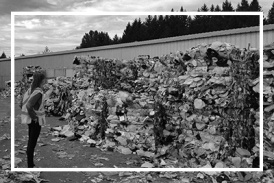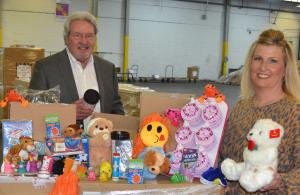Nonprofits & Teachers Can Avoid Tariffs & Receive New Donated Merchandise
Nonprofits & teachers have more motivation than ever to consider obtaining goods from a gifts-in-kind organization.
So nonprofits, community organizations, social service agencies and teachers have more motivation than ever to consider obtaining goods from a gifts-in-kind organization. Why?
Because the merchandise available from a gifts-in-kind organization is already in the U.S., donated by a manufacturer, distributor or retailer that is looking to clear out overstocks and excess inventory. If tariffs had been assessed, they will have already been paid by the company, not the consumer.
There are several of these organizations across the U.S. Nonprofit 501(c)(3) organizations, community organizations and social service agencies, along with teachers in public and private schools, can join one of these groups. That membership entitles them to receive merchandise at no cost, aside from a nominal handling fee. There usually is an online catalog that makes ordering simple.
Gifts-in-kind merchandise can be used to meet any need – for example, making sure a student has a warm sweatshirt for school or filling care packages for domestic and international mission trips. However, the merchandise must be used to fulfill the organization's mission or supplement classroom supplies. It may not be sold, traded or bartered.
These goods can make a big difference to a nonprofit. One example is Teen Round-Up of Duncan, Oklahoma, which serves families in financial crisis and single parent homes. It has been a member of a gifts in kind program for over a decade.
Every year, Teen Round-up hosts a free three-day, two-night summer camp for 1,000 children ages 7-12. The camp includes seven home cooked meals, crafts, sports, challenging zip lines and more. It also puts on a “Christmas Surprize” for more than 200 children and single moms, with dinner, gifts and a party atmosphere.
Roxanne Kerley, vice president and director, says, “This year, our giant Christmas tree and camp activity building were decorated with 100 percent gifts in kind ornaments, lights and decorations. We gave 260 children a giant gift bag filled with novelty items, clothing, educational items and toys.
“We’re doing more for our community because of it,” she adds. “The small cost to be a member and allocation costs are just a token compared to what you will receive through the organization.”
For instance, membership in the gifts in kind organization www.NAEIR.org Teacher Program is free and helps stretch out-of-pocket expenses by providing materials such as arts and crafts items, pens and pencils, highlighters, scissors, incentive items like stickers and so much more. In most cases, participants in this program pay less than a third of what the products would cost even at the lowest prices available at deep discount stores
Donations come from dozens of companies as diverse as Crayola, McMaster-Carr, Avery Products, Newell Brands, and Cutter & Buck. Whatever a nonprofit or teacher needs, they’re likely to find it.
What motivates companies to donate to gifts-in-kind organizations? It may be to reduce storage costs, clear up space in their warehouse, keep unsold merchandise out of landfills or fulfill their philanthropic missions to give back to their communities. It’s also a way for companies to streamline their donation process. They can receive a tax deduction for donated items without having to tie up their own employees’ time searching for worthy groups or shipping items to multiple locations.
With gifts-in-kind organizations, nonprofits and teachers can both spend less on items they need while also providing more help to the communities and students they serve.
Gary C. Smith is the president and chief executive officer of the National
Association for the Exchange of Industrial Resources (NAEIR), the oldest, largest gifts-in-kind organization in the U.S. NAEIR receives donations of excess inventory from American corporations and distributes merchandise to a membership base of more than 13,000. It has collected and redistributed more than $3 billion worth of new, donated supplies and equipment since its founding in 1977. Visit www.NAEIR.org or call 800-562-0955.
Joanne Levine
Lekas & Levine PR
joannepr@aol.com
Legal Disclaimer:
EIN Presswire provides this news content "as is" without warranty of any kind. We do not accept any responsibility or liability for the accuracy, content, images, videos, licenses, completeness, legality, or reliability of the information contained in this article. If you have any complaints or copyright issues related to this article, kindly contact the author above.
Dialogue with Three Chords and brooklynONE Productions Celebrate Pride Month with Night of Original Theatre
Business Solutions Marketing Group Unveils AI Video Marketing Program: Propelling Small Businesses to Google Page ONE
Eylsia, Rising Filipina Pop Artist, Explores the Promise and Challenges of AI in Music
Kalendarium
Więcej ważnych informacji
 Jedynka Newserii
Jedynka Newserii

 Jedynka Newserii
Jedynka Newserii

Handel

Ze względu na różnice w cenach surowce wtórne przegrywają z pierwotnymi. To powoduje problemy branży recyklingowej
Rozporządzenie PPWR stawia ambitne cele w zakresie wykorzystania recyklatów w poszczególnych rodzajach opakowań. To będzie oznaczało wzrost popytu na materiały wtórne pochodzące z recyklingu. Obecnie problemy branży recyklingu mogą spowodować, że popyt będzie zaspokajany głównie przez import. Dziś do dobrowolnego wykorzystania recyklatów nie zachęcają przede wszystkim ceny – surowiec pierwotny można kupić taniej niż ten z recyklingu.
Przemysł spożywczy
Rośnie presja konkurencyjna na unijne rolnictwo. Bez rekompensat sytuacja rolników może się pogarszać

Rolnictwo i żywność, w tym rybołówstwo, są sektorami strategicznymi dla UE. System rolno-spożywczy, oparty na jednolitym rynku europejskim, wytwarza ponad 900 mld euro wartości dodanej. Jego konkurencyjność stoi jednak przed wieloma wyzwaniami – to przede wszystkim eksport z Ukrainy i niedługo także z krajów Mercosur, a także presja związana z oczekiwaniami konsumentów i Zielonym Ładem. Bez rekompensat rolnikom może być trudno tym wyzwaniom sprostać.
Transport
Infrastruktury ładowania elektryków przybywa w szybkim tempie. Inwestorzy jednak napotykają szereg barier

Liczba punktów ładowania samochodów elektrycznych wynosi dziś ok. 10 tys., a tempo wzrostu wynosi ok. 50 proc. r/r. Dynamika ta przez wiele miesięcy była wyższa niż wyniki samego rynku samochodów elektrycznych, na które w poprzednim roku wpływało zawieszenie rządowych dopłat do zakupu elektryka. Pierwszy kwartał br. zamknął się 22-proc. wzrostem liczby rejestracji w ujęciu rocznym, ale kwiecień przyniósł już wyraźne odbicie – o 100 proc.
Partner serwisu
Szkolenia

Akademia Newserii
Akademia Newserii to projekt, w ramach którego najlepsi polscy dziennikarze biznesowi, giełdowi oraz lifestylowi, a także szkoleniowcy z wieloletnim doświadczeniem dzielą się swoją wiedzą nt. pracy z mediami.










.gif)

 |
| |
| |
|